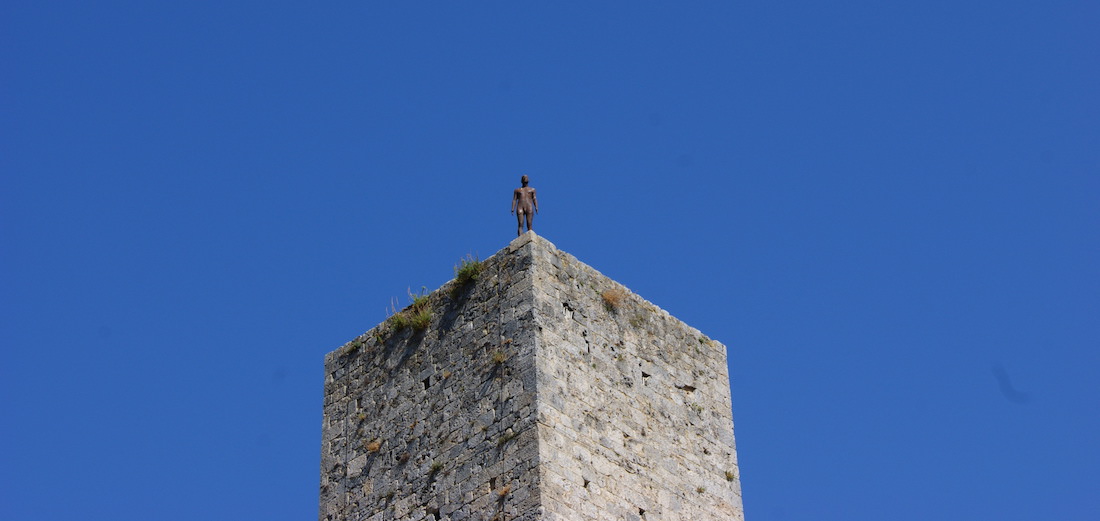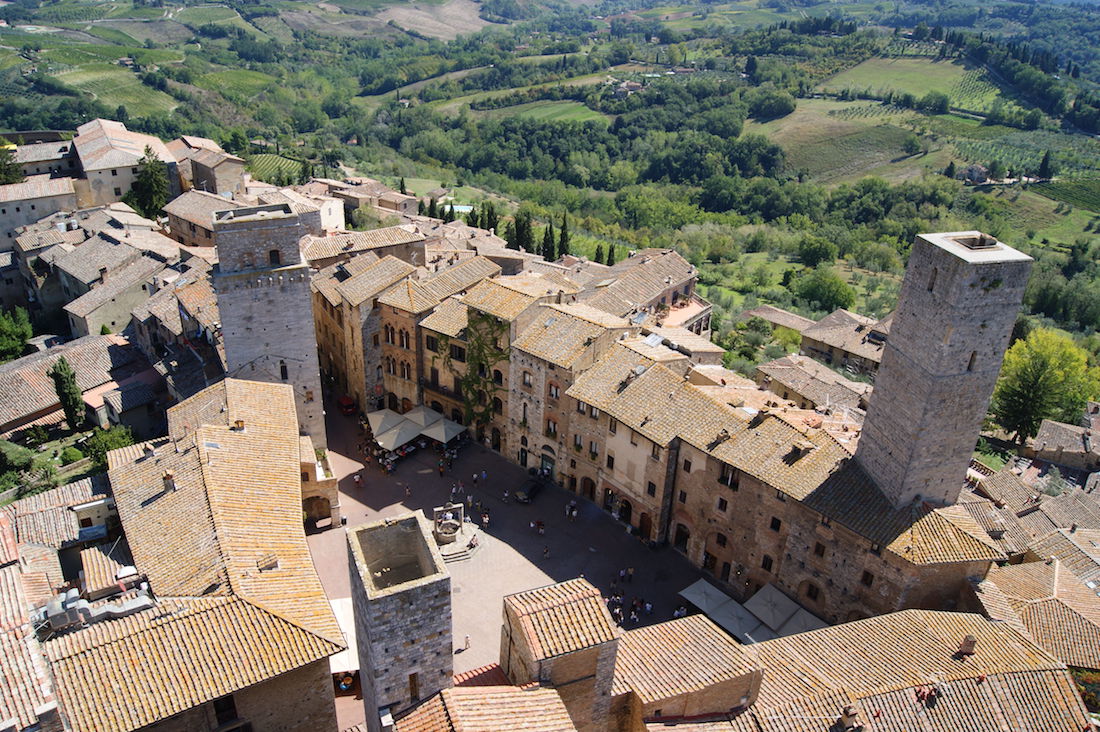God knows what it’s like living in a village like San Gimignano. Every day residents have to cope with a tidal wave of tourists flocking in from Tuscany’s big cities and ports to visit its trademark towers.
Yes, they bring business to the shops and cafes and keep people in work but the daily influx of crowds would drive me bonkers. They make a visit to this beautiful example of a medieval walled hill town a bit of a trial. San Gimignano is a victim of overtourism and I have to put up my hand as a guilty party.
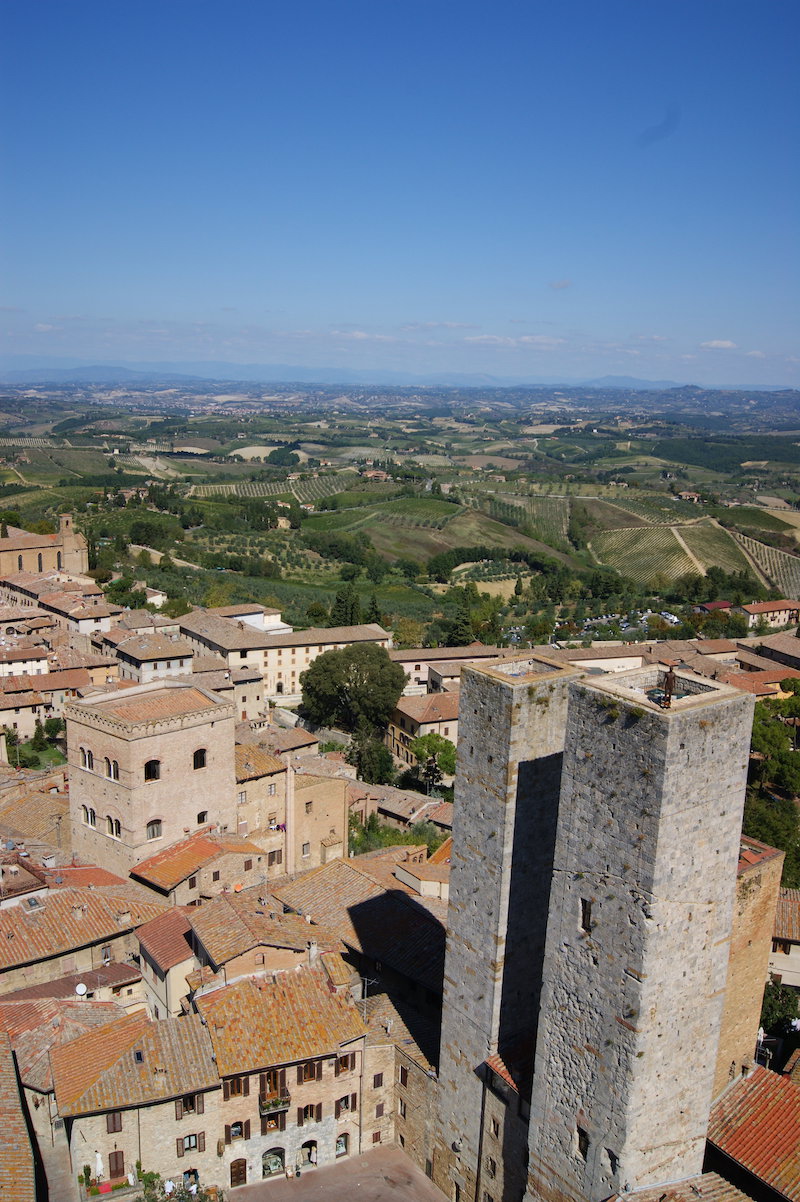
We were carried along by the tide of humanity into its narrow streets, past the inevitable souvenir shops and touts, but however vexing the industrial strength tourism can be, the town remains an absolute beauty and fully deserves its status as a UNESCO World Heritage Site. It’s famous for its 14 tower houses, reminiscent of Bologna, which dominate the skyline and stand despite the depredations of the centuries. Some date from as far back as the 13th century, when they may have had a defensive purpose in times of conflict but were also a sign of power and wealth.
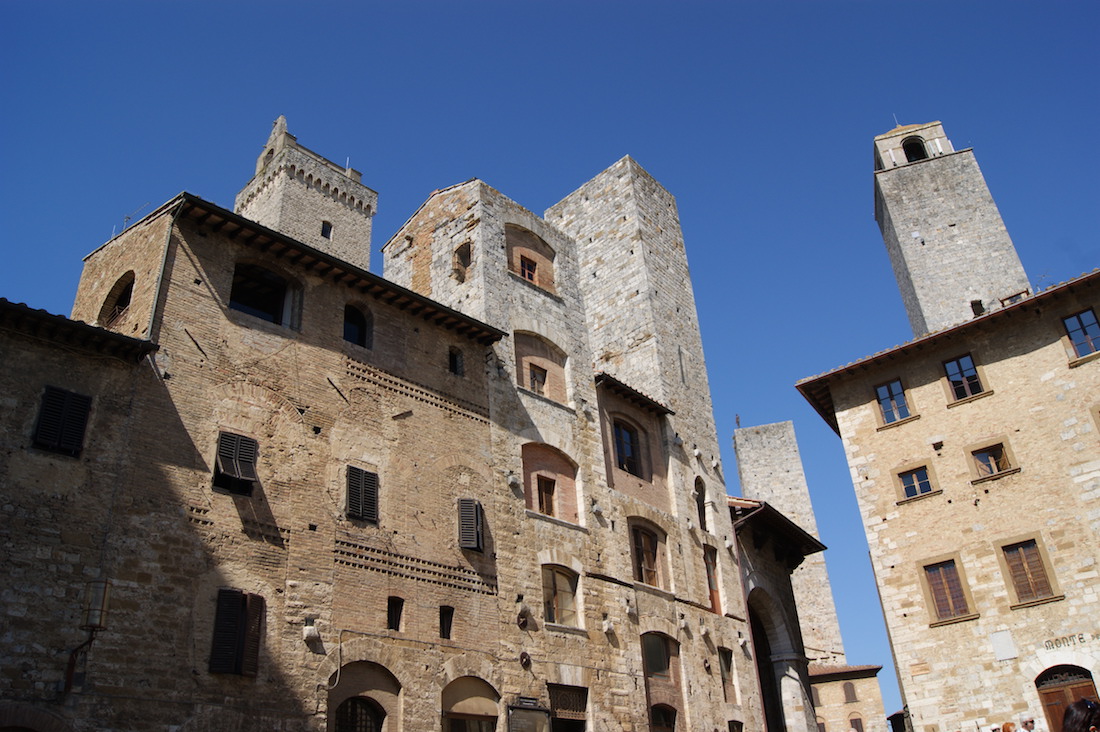
During our visit, some years back now, a number of sculptor Antony Gormley’s famed statues had been set up around the town and one perched precariously atop one of the towers. We stopped to take photos of them as we walked up through the triangular (and mobbed) Piazza della Cisterna, with its examples of Romanesque and Gothic architecture and named for the well that served as the locals’ main water supply over many centuries. A few steps beyond lies the Piazza Duomo, home to a church and the mayor’s grand palazzo.
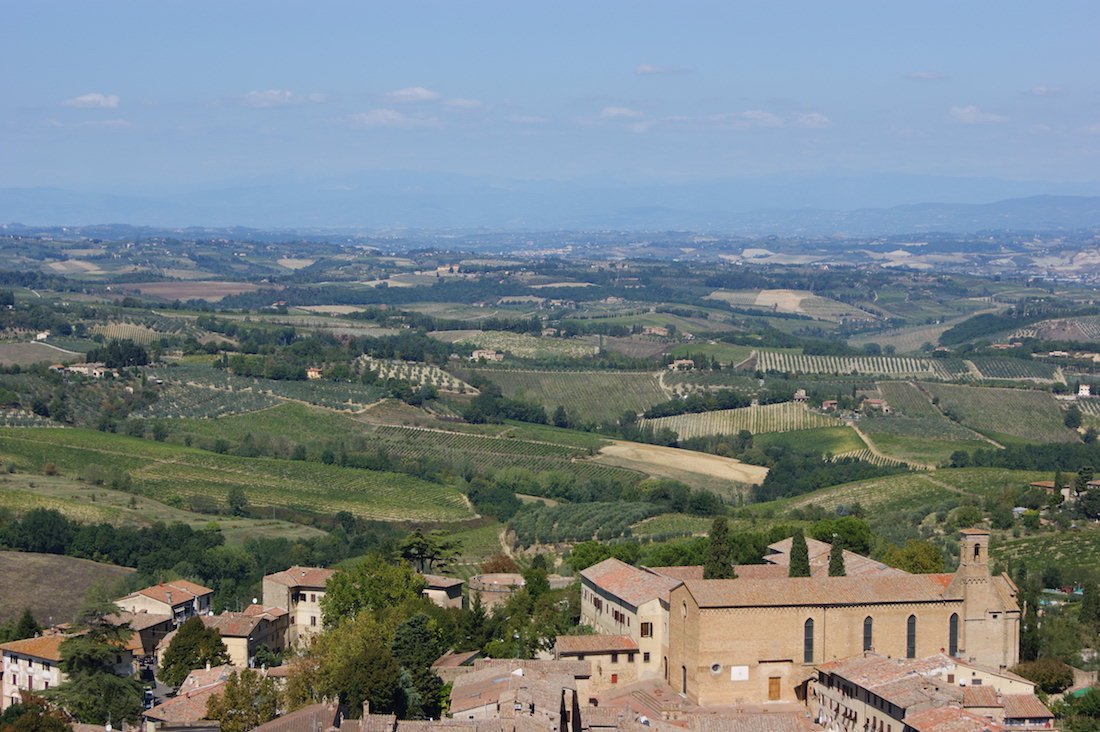
We paid our dues and climbed one of the towers to get the best of the views, and they were excellent indeed. All around lay the sun-drenched green hills and terracotta villages of Tuscany, below us the walled village and its towers. San Gimignano looked beautiful and I could understand why people, rightly or wrongly, flock to it in their thousands…
